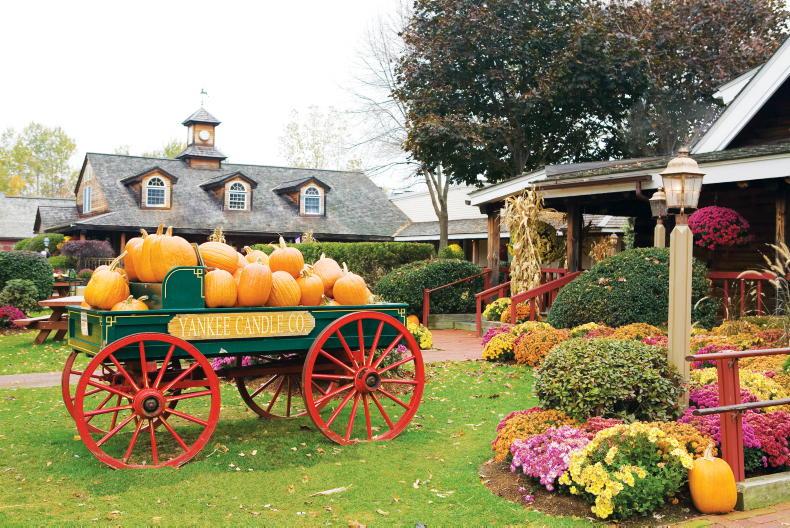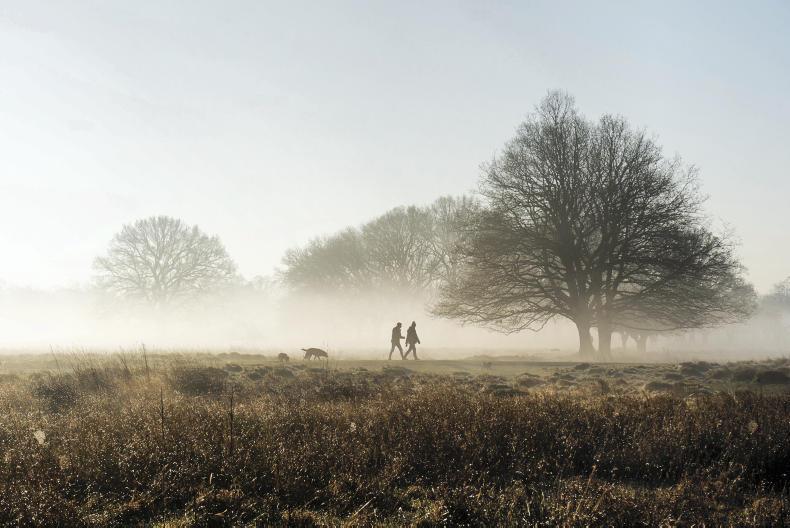One of the first things that always strikes me when I visit the great state of Virginia is the courtly good manners of the people. Within a couple of days, I’ve got in on it myself, and am addressing everyone as Sir and Ma’am and conducting the simplest transactions with an elaborate olde worlde courtesy.
Virginia is undoubtedly “The South”, but it is not “The Deep South”. The charm and hospitality and love of good living that Southerners are famous for is to be found here in abundance, but there is also less parochialism and suspicion of the outsider than you might encounter in Georgia or Mississippi.
Considering its location on the doorstep of the national capital, it is also remarkably countrified. Venture off the main highways, and you very quickly find yourself in a picturesque land of rolling fields and extensive oak woods that are bursting with wildlife – whitetail deer, bobcats, black bears, coyotes and wild turkeys.

Whitetail deer in the woods near Middleburg. \ Liam Clancy
For the visitor who wants to get lost in nature, without doing anything so drastic as getting out of their car, a jaunt along the Skyline Drive is a must. The Skyline Drive is a 100 mile long national parkway that runs the entire length of the Shenandoah National Park in the Blue Ridge Mountains.
For most of its length, it runs along the ridge of the mountains, offering stunning views over the Shenandoah Valley to the west and the Virginia Piedmont to the east. Late autumn is a particularly popular time to visit, when the woods are multi-hued with brilliant fall colour.
My most recent visit was on a March day when I had the national park almost to myself. There was something quite hypnotic about cruising for mile after mile through the vast brown woods along a road striped with spring sunshine and purple shadow, with nothing moving except last year’s leaves silently drifting across my path.
The Skyline Drive closely parallels a portion of the Appalachian Trail, a 2,200 mile hiking trail running from Georgia to Maine, mostly through forested uplands. Every year hundreds of hardcore enthusiasts termed thru-hikers attempt to hike the trail in its entirety in a single season. I walked perhaps one mile of it before getting lonely for my car, but I felt I had got the idea.
Hunting tradition
Seeing the country from the back of a horse is more my line. There is a strong foxhunting tradition in the region; driving along the country roads you will notice purpose-built hunt jumps in nearly every fence line.
The 6th Lord Fairfax of Cameron, who owned five million acres of land in colonial Virginia, imported foxhounds from England in 1747 and started the first organised hunting in what was to become the United States.

Liam Clancy pictured hunting with the Goshen hounds in Maryland
Lord Fairfax hunted well into his seventies, and transmitted his passion for the chase to his young protégé, George Washington. There are dozens of mounted packs in the state today, ranging from the rough and ready to the socially grand – John and Jackie Kennedy owned a farm near Middleburg and hunted regularly with the Orange County hounds.
American horsey folk love the Irish, and I have never had anything less than the warmest of welcomes from any Virginia hunt.

Hunting with the Blue Ridge hounds in Shenadoah Valley. The huntsman is Limerick native Graham Buston. \ Sherri Holdridge
There are few finer ways to spend a day than following hounds through the oak woods around Middleburg or galloping across the rolling tawny grassland of the Shenandoah Valley in pursuit of a coyote. Middleburg is known as the “Nation’s Horse and Hunt Capital”, and is an excellent base from which to explore Northern Virginia.
It is a pretty colonial town full of fine restaurants and quirky boutiques, and is within easy reach of the mountains and some of the best known vineyards.
History
Drive northward across the wide blue waters of the Potomac River and you find yourself in the little state of Maryland (pronounced ‘Marryland’ by those of us in the know). Though Virginia and Maryland are next-door-neighbours, there are cultural differences between the two states that are evident even to the casual visitor.
Marylanders are seen as “Yankees” by their Southern neighbours, but considered Southerners in the states to the north. Maryland was a slave-holding state, but remained loyal to the Union in the Civil War, and its proximity to Washington DC made it strategically important.
The Brigade was widely regarded as one of the toughest in the Union Army
I had business in Boonsboro, and couldn’t resist a detour to nearby Sharpsburg. It was hard to believe that anything exciting had ever happened in the sleepy, old-fashioned town of Sharpsburg, but in 1862 one of the bloodiest battles of the American Civil War was fought on its doorstep when the Union Army clashed with Robert E. Lee’s Confederates at Antietam Creek.
The Irish Brigade, composed of Irish-Americans under the command of Thomas Francis Meagher, was involved in some of the hottest fighting of the battle, and suffered 60% casualties attempting to take a Confederate position.
The Brigade was widely regarded as one of the toughest in the Union Army, and had more men killed in action in the course of the war than almost any other formation.
Today the Antietam battlefield is a beautifully preserved and oddly peaceful spot, and is a worthwhile stop-off for anyone with even a passing interest in American history.
Culinary culture
The Mid-Atlantic region is sufficiently cosmopolitan that all culinary tastes are catered for. Whether one is dining at the Deja Brew café in Warrenton or the historic Red Fox Inn in Middleburg, the service is universally excellent, although an American waiter expects to be tipped rather more than their Irish counterpart – say 15% - 25%.
There is a long tradition of barbecued meat across the whole of the South, with pork in a vinegar-based sauce being Virginia’s particular speciality. Brunswick Stew – ideally made with squirrel or rabbit meat - and a molasses crumb cake called Shoofly Pie, are among the other gifts that the state has given to civilisation. Steamed blue crab dusted with Old Bay seasoning is a dish synonymous with Maryland, whose cuisine reflects its more maritime culture.

The historic Red Fox Inn in Middleburg
Wine has been produced in The South since the earliest days of European colonisation, but it is only in the 21st century that Virginia has begun to achieve a sustainable commercial wine industry. There are over 250 wineries operating today, the majority still being small family-owned businesses that rely on wine tourism and direct sales for most of their revenue.
Cider making is also a long-established tradition of the region, and the venerable Winesap apple cultivar, which has fallen out of favour elsewhere, is still commonly grown and used.
Quaffing Winesap cider after a day’s hunting or savouring the tart blackberry aromas of Horton Vineyard’s Malbec over dinner is all very well of course, but nowhere in the United States have I ever found the answer to the eternal conundrum of the Irish abroad: where can I get a decent cup of tea?
One of the first things that always strikes me when I visit the great state of Virginia is the courtly good manners of the people. Within a couple of days, I’ve got in on it myself, and am addressing everyone as Sir and Ma’am and conducting the simplest transactions with an elaborate olde worlde courtesy.
Virginia is undoubtedly “The South”, but it is not “The Deep South”. The charm and hospitality and love of good living that Southerners are famous for is to be found here in abundance, but there is also less parochialism and suspicion of the outsider than you might encounter in Georgia or Mississippi.
Considering its location on the doorstep of the national capital, it is also remarkably countrified. Venture off the main highways, and you very quickly find yourself in a picturesque land of rolling fields and extensive oak woods that are bursting with wildlife – whitetail deer, bobcats, black bears, coyotes and wild turkeys.

Whitetail deer in the woods near Middleburg. \ Liam Clancy
For the visitor who wants to get lost in nature, without doing anything so drastic as getting out of their car, a jaunt along the Skyline Drive is a must. The Skyline Drive is a 100 mile long national parkway that runs the entire length of the Shenandoah National Park in the Blue Ridge Mountains.
For most of its length, it runs along the ridge of the mountains, offering stunning views over the Shenandoah Valley to the west and the Virginia Piedmont to the east. Late autumn is a particularly popular time to visit, when the woods are multi-hued with brilliant fall colour.
My most recent visit was on a March day when I had the national park almost to myself. There was something quite hypnotic about cruising for mile after mile through the vast brown woods along a road striped with spring sunshine and purple shadow, with nothing moving except last year’s leaves silently drifting across my path.
The Skyline Drive closely parallels a portion of the Appalachian Trail, a 2,200 mile hiking trail running from Georgia to Maine, mostly through forested uplands. Every year hundreds of hardcore enthusiasts termed thru-hikers attempt to hike the trail in its entirety in a single season. I walked perhaps one mile of it before getting lonely for my car, but I felt I had got the idea.
Hunting tradition
Seeing the country from the back of a horse is more my line. There is a strong foxhunting tradition in the region; driving along the country roads you will notice purpose-built hunt jumps in nearly every fence line.
The 6th Lord Fairfax of Cameron, who owned five million acres of land in colonial Virginia, imported foxhounds from England in 1747 and started the first organised hunting in what was to become the United States.

Liam Clancy pictured hunting with the Goshen hounds in Maryland
Lord Fairfax hunted well into his seventies, and transmitted his passion for the chase to his young protégé, George Washington. There are dozens of mounted packs in the state today, ranging from the rough and ready to the socially grand – John and Jackie Kennedy owned a farm near Middleburg and hunted regularly with the Orange County hounds.
American horsey folk love the Irish, and I have never had anything less than the warmest of welcomes from any Virginia hunt.

Hunting with the Blue Ridge hounds in Shenadoah Valley. The huntsman is Limerick native Graham Buston. \ Sherri Holdridge
There are few finer ways to spend a day than following hounds through the oak woods around Middleburg or galloping across the rolling tawny grassland of the Shenandoah Valley in pursuit of a coyote. Middleburg is known as the “Nation’s Horse and Hunt Capital”, and is an excellent base from which to explore Northern Virginia.
It is a pretty colonial town full of fine restaurants and quirky boutiques, and is within easy reach of the mountains and some of the best known vineyards.
History
Drive northward across the wide blue waters of the Potomac River and you find yourself in the little state of Maryland (pronounced ‘Marryland’ by those of us in the know). Though Virginia and Maryland are next-door-neighbours, there are cultural differences between the two states that are evident even to the casual visitor.
Marylanders are seen as “Yankees” by their Southern neighbours, but considered Southerners in the states to the north. Maryland was a slave-holding state, but remained loyal to the Union in the Civil War, and its proximity to Washington DC made it strategically important.
The Brigade was widely regarded as one of the toughest in the Union Army
I had business in Boonsboro, and couldn’t resist a detour to nearby Sharpsburg. It was hard to believe that anything exciting had ever happened in the sleepy, old-fashioned town of Sharpsburg, but in 1862 one of the bloodiest battles of the American Civil War was fought on its doorstep when the Union Army clashed with Robert E. Lee’s Confederates at Antietam Creek.
The Irish Brigade, composed of Irish-Americans under the command of Thomas Francis Meagher, was involved in some of the hottest fighting of the battle, and suffered 60% casualties attempting to take a Confederate position.
The Brigade was widely regarded as one of the toughest in the Union Army, and had more men killed in action in the course of the war than almost any other formation.
Today the Antietam battlefield is a beautifully preserved and oddly peaceful spot, and is a worthwhile stop-off for anyone with even a passing interest in American history.
Culinary culture
The Mid-Atlantic region is sufficiently cosmopolitan that all culinary tastes are catered for. Whether one is dining at the Deja Brew café in Warrenton or the historic Red Fox Inn in Middleburg, the service is universally excellent, although an American waiter expects to be tipped rather more than their Irish counterpart – say 15% - 25%.
There is a long tradition of barbecued meat across the whole of the South, with pork in a vinegar-based sauce being Virginia’s particular speciality. Brunswick Stew – ideally made with squirrel or rabbit meat - and a molasses crumb cake called Shoofly Pie, are among the other gifts that the state has given to civilisation. Steamed blue crab dusted with Old Bay seasoning is a dish synonymous with Maryland, whose cuisine reflects its more maritime culture.

The historic Red Fox Inn in Middleburg
Wine has been produced in The South since the earliest days of European colonisation, but it is only in the 21st century that Virginia has begun to achieve a sustainable commercial wine industry. There are over 250 wineries operating today, the majority still being small family-owned businesses that rely on wine tourism and direct sales for most of their revenue.
Cider making is also a long-established tradition of the region, and the venerable Winesap apple cultivar, which has fallen out of favour elsewhere, is still commonly grown and used.
Quaffing Winesap cider after a day’s hunting or savouring the tart blackberry aromas of Horton Vineyard’s Malbec over dinner is all very well of course, but nowhere in the United States have I ever found the answer to the eternal conundrum of the Irish abroad: where can I get a decent cup of tea?













SHARING OPTIONS